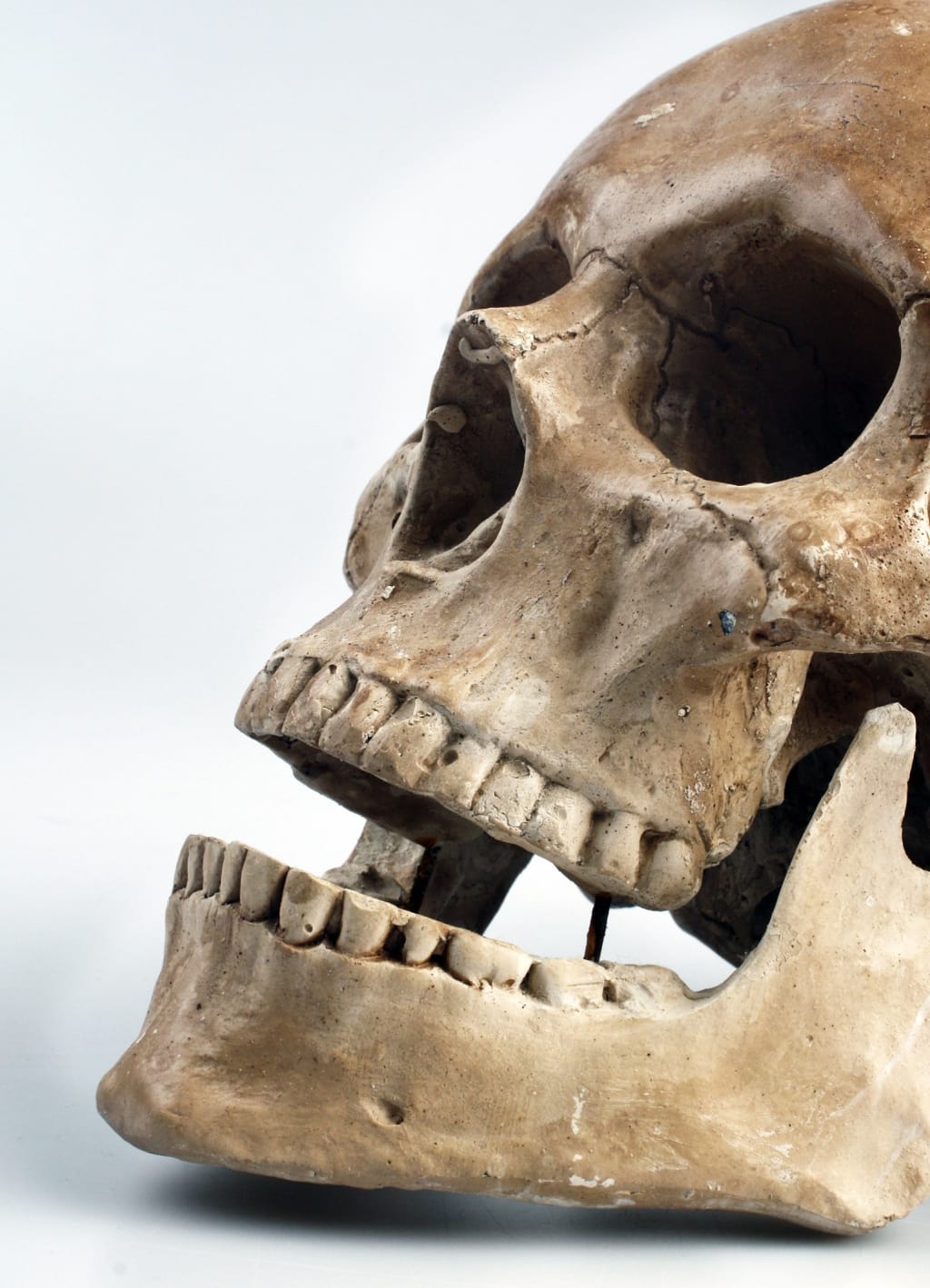Are humans still evolving?
For much of nature, natural selection and ‘survival of the fittest’ still play a dominant role; only the strongest can survive in the wild. As little as a few hundred years ago, the same was true for humans, but what about now?

Nowadays, with the availability of better healthcare, food, heating and hygiene the number of ‘hazards’ we experience in our lives has dramatically reduced. In scientific terms, these hazards are referred to as selection pressures. They put pressure on us to adapt in order to survive the environment we are in and reproduce. It is selection pressure that drives natural selection (‘survival of the fittest’) and it is how we evolved into the species we are today.
The question is, now we have fewer selection pressures and more help in the form of medicine and science, will evolution stop altogether for humans? Has it stopped already?
Genetic studies have demonstrated that humans are still evolving. To investigate which genes are undergoing natural selection, researchers looked into the data produced by the International HapMap Project and the 1000 Genomes Project.
A catalogue of human genetic variation
The International HapMap and 1000 Genomes Projects both aimed to catalogue genetic variation in DNA samples taken from individual humans from across the world.
The majority of the catalogued human variation is characterised by single base changes, referred to as single nucleotide polymorphisms (SNPs). The location and frequency of these changes allows us to provide a list of regions in the human genome where genetic variation is common. Patterns of reduced variation help scientists to identify genes that may have recently been positively selected for by natural selection.
How are genetic variants found?
Genetic variants can be found by comparing the genomes of different people and looking to see where there are differences in the DNA sequence and where the genes are located in their genomes. When genetic variants confer a particular advantage and improve our fitness they are more likely to survive and be passed onto future generations, thus becoming more common in a population. When this happens, a pattern or ‘signature’ can be found in the genomes of the population. This is because, as a genetic variant starts to spread through a population, it doesn’t come alone but brings with it some nearby genetic ‘passengers’. These passengers are bits of DNA that are located on either side of the advantageous variant. So, if scientists find this signature in lots of genomes in a population, it is one of the first signs that natural selection could be operating. It suggests that they all stem from a common ancestor and have therefore inherited the same pattern of genetic variation.
If the genomes of two populations are found to be very different, it could be a sign that selection has occurred in one population, but not the other. As the advantageous gene starts to become more common, it can influence which other genes are expressed and even reduce the overall level of genetic variation in the surrounding area of the genome, making it stand out.
Unfortunately, even in the absence of selection, any of these patterns can turn up by chance, especially when the whole genome is examined. To make things more complicated, events such as population expansion can mimic some of the same effects. There is no perfect way to recognise where selection has occurred, but we sometimes get a very strong hint.
Scientists have found that the majority of genes that have undergone recent evolution are associated with smell, reproduction, brain development, skin pigmentation and immunity? against pathogens.
Lactose tolerance
One example of recent natural selection in humans involves the ability to tolerate the sugar, lactose, in milk. In most parts of the world, adults are unable to drink milk because their body switches off the intestinal production of lactase, an enzyme that digests the sugar in the milk, after weaning. As these people cannot digest the lactose sugar they suffer symptoms including bloating, abdominal cramps, flatulence, diarrhoea, nausea, or vomiting.
Yet, more than 70 per cent of European adults can quite happily drink milk. This is because they carry a regulatory change in the region of DNA that controls the expression of the gene that codes for lactase. This DNA change enables the lactase gene to be switched on and lactase production to continue, even after weaning. This genetic change appears to have happened between 5,000 and 10,000 years ago, which is around the same time domestication of milk-producing farm animals, such as cows, was established in Europe.
This suggests that being able to drink milk into adulthood provided a strong evolutionary advantage in Europe. This may be because sun exposure was much lower in Europe and people were in greater need of the vitamin D found in cow’s milk. Or it may be because cow’s milk provides a much safer and cleaner alternative to drinking water that may cause disease. Milk may also have prevented death from starvation when crops failed and food was scarce. Those who could not tolerate lactose would die of starvation, while those who could tolerate lactose would survive.
Whatever the reason, a strong selection pressure must have favoured those people whose lactase gene remained switched on. This variant of the lactase gene is so common in Europeans that we now consider lactose intolerance to be a health condition, rather than the natural process that it is.
Infectious disease
The strongest evolutionary pressure of all comes from infectious diseases. Millions of people die from infectious diseases each year, particularly in the poorer regions of the world. People who are able to survive infections are more likely to pass on their genes to their offspring. However, genes that provide an advantage against one disease may not provide an advantage when faced with another.
The Caspase-12 gene
When infectious diseases became more common in human populations, perhaps because populations grew in size and pathogens were able to spread more rapidly, people with a genetic advantage were more likely to survive and reproduce. As a result, these genetic advantages were selected for, allowing more people to survive and fight disease. In some cases, a genetic advantage resulted from losing the full activity of a gene.
A good example of this is thecaspase-12< gene.Caspase-12 works as a part of our immune system, responding specifically to bacterial infection.
In a study carried out by researchers at the Wellcome Trust Sanger Institute in 2005, it was suggested that the caspase-12 gene was gradually inactivated in the human population because the active gene can result in a poorer response to bacterial infection. People with fully functional caspase-12 were at a much higher risk of a fatal bacterial infection (sepsis) if bacteria entered the bloodstream, than people with the inactive version of the gene.
Before improved hygiene and antibiotics, survival of severe sepsis would have been a strong selective force for the inactive gene, which would have been greatly favoured. Today, people with two copies of the inactive gene are eight times more likely to escape severe sepsis if suffering with an infectious disease and three times more likely to survive.
But the study leaves us with a key question. If it is so good to have the inactive gene, why did our ancestors have an active form in the first place? It may be because in some areas of the world having the active gene carries an equal advantage to carrying the inactive gene in other areas of the world. What is clear however, is that all organisms are dynamic and will continue to adapt to their unique environments to continue being successful. In short, we are still evolving.
HIV susceptibility
HIV is a modern-day driving force for human evolution. In certain parts of South Africa, nearly half of women are infected with the virus. In a study in Durban, Dr Philip Goulder and colleagues from the University of Oxford found that women with a certain combination of variants in a human leukocyte antigen (HLA-B27) were better at clearing HIV infection than those with the HLA-A or HLA-C genetic subtypes. HLAs, produced by the major histocompatibility complex (MHC), are by far the most variable region of the human genome, and are an essential part of the immune system. Infected mothers with HIV-protective HLA-B genes were more likely to survive HIV infection and pass on these genes to their children.
It has been proposed that the relatively low level of HIV in Western Europe is aided by a common variation in a co-receptor for the HIV virus particle (CCR5). This variant protects people almost completely against HIV and is found in 13 per cent of Europeans. However it is extremely rare in other populations around the world, including Africans. The origin of the variant in humans dates back thousands of years ago, well before the AIDS epidemic? which only dates from the late 1970s. It is therefore likely that this variant may have been selected because it protects against other viral or bacterial infections.






Comments
There are no comments for this story
Be the first to respond and start the conversation.